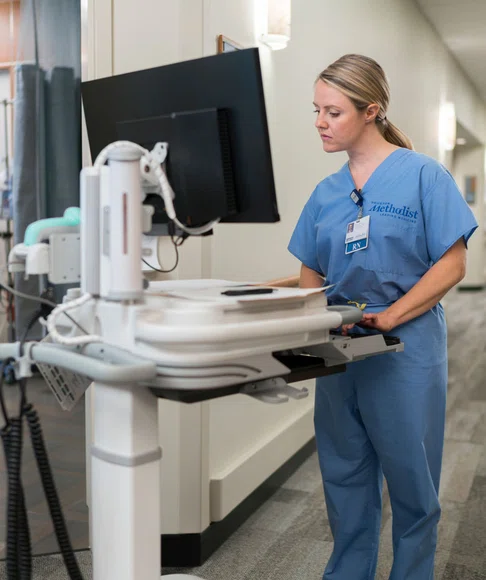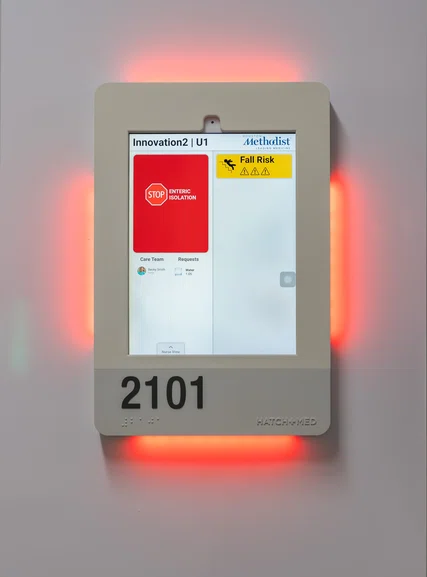© 2025. Houston Methodist, Houston, TX. All rights reserved.


In this
issue

WELCOME
NURSING SCIENCE
EDUCATION
PRACTICE

Nursing Documentation: Your Key to Safe and Effective Care

Nursing Documentation: Protecting Patients and Nurses
PROFESSIONAL DEVELOPMENT
MAGNET

Navigating the Legal Implications of Nursing in Achieving and Maintaining Magnet Designation

10th Annual Surgical Services Fair: A Milestone in Education and Teamwork
FROM OUR TEAMS

ABOUT DISCOVERN
PRACTICE
Nursing Documentation: Protecting Patients and Nurses
By Eden Ybarola, MSN, RN, NE-BC, NPD-BC, CCRN, CVRN-BC,Professional Practice Leader,Houston Methodist Hospital
By Eden Ybarola, MSN, RN, NE-BC, NPD-BC, CCRN, CVRN-BC,
Professional Practice Leader,
Houston Methodist Hospital


Moreover, these smart room technologies significantly streamline communication between nursing staff and other healthcare providers. They allow for quicker updates and alerts, ensuring everyone involved in a patient’s care is on the same page. As noted in the McKinsey survey, nurses’ workload often includes tasks that, when optimized, lead to increased efficiency and improved patient outcomes.
By adopting smart room technology, hospitals enhance their operational efficiency and contribute to a higher level of job satisfaction among nursing staff. When nurses can efficiently manage their tasks through technology, they experience reduced stress, increased job fulfillment and a more significant opportunity to connect meaningfully with their patients. This is particularly important in nursing, where strong patient-nurse relationships are integral to providing compassionate, effective care. At Houston Methodist West, pre-and post-implementation questionnaires will be included to evaluate staff perceptions of the Vibe Health smart room platform, explicitly focusing on time management and awareness of patients’ needs. Additionally, self-report questionnaires will be used to evaluate patients’ perceptions of the Vibe Health smart room platform, with questions addressing awareness of the care team, pain management and mobility goals.
Nursing documentation serves as a report of the nursing care given to patients by qualified nurses or other health care team members who provide care to patients under the direction of a nurse. It is essential in nursing practice as it allows legal evidence of the care provided, promotes effective communication with multidisciplinary team members, facilitates continuity of patient care, and serves as a supporting document to evaluate and improve the quality of patient care (Abd El Rahman et al., 2021). The nursing board and other regulatory agencies highlight the essential aspects of nursing documentation in the context of legal and professional frameworks. Inaccurate and incomplete nursing documentation in the patient health record can pose a risk to patient care, treatment, and discontinuity of care as the nursing documentation facilitates interprofessional collaborations (Tajabadi et al., 2020).
The Texas Nursing Practice Act (NPA) helps protect the public. It authorizes the Texas Board of Nursing (BON) to regulate nursing practices to ensure public safety and the provision of high-quality patient care. Nurses should be familiar with the state regulations and standards of nursing practice. They play an essential role as a primary point of contact for the healthcare team and the patients in coordinating all aspects of patient care delivery. Nurses are responsible for communicating with the healthcare members and others involved in care, for example, through nursing documentation (Coleman et al., 2023). Nursing documentation or charting should include the most critical components as they are crucial in managing patient care. These components make up the acronym FACT:
- Factual
- Accurate
- Complete
- Timely
References:
Abd El Rahman, A., Ibrahim, M., & Diab, G. (2021). Quality of Nursing Documentation and its Effect on Continuity of patients’ care. Menoufia Nursing Journal, 6(2), 1-18. doi: 10.21608/menj.2021.206094
Coleman S, Vadakekut ES, Bohlen J. Texas Nursing Ethics and Jurisprudence. [Updated 2023 Jul 14]. In: StatPearls [Internet]. Treasure Island (FL): StatPearls Publishing; 2025 Jan-. Available from: https://www.ncbi.nlm.nih.gov/books/NBK594268/
Lindsay, M. R., & Lytle, K. (2022). Implementing Best Practices to Redesign Workflow and Optimize Nursing Documentation in the Electronic Health Record. Applied clinical informatics, 13(3), 711–719. https://doi.org/10.1055/a-1868-6431
Tajabadi A, Ahmadi F, Sadooghi Asl A, Vaismoradi M. Unsafe nursing documentation: A qualitative content analysis. Nursing Ethics. 2020;27(5):1213-1224. doi:10.1177/0969733019871682









